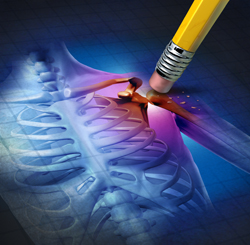Osteoporosis: Part 1, an Overview

Osteoporosis is usually one of the things women start to think about at about the same time they start thinking about menopause. And like menopause, the earlier you start thinking about how it will affect you and what preventative measures you can take, the better!
Similarly to the reproductive system, your bone density reaches its max in your mid-20s and starts to decrease in your mid-30s. Basically what happens is that when you’re young your bones are constantly being broken down and renewed, so much so that new bone mass is being made faster than the old bane mass is being broken down. At a certain point (usually between someone’s mid-20s to mid-30s) your bone mass will reach its peak. From there you have to work with what you’ve got!
A partial risk factor in developing osteoporosis will depend on how much bone mass you’ve “banked” in your youth. A decrease in bone mass means an increased chance of breaking bones from even “small” falls (as opposed to “big” falls, like falling from a ladder)
Since there are very few ways to detect the thinning of bones at its early stages, a good way to gain insight is by looking at your current health as well as your family history.
Did you go through early menopause? Do you have a family history of hip fractures? Do you or a family member have a medical history that includes Rheumatoid Arthritis or Crohns Disease? Have you taken a corticosteroid medication for a long period of time?
If so, talk to your doctor about doing a DEXA scan to check the thickness of your bones.
If bones have been thinned as a result of osteoporosis you may notice issues like a decrease in height, back pain (caused by a collapsed vertebra), bone fractures that occur in a way that seem “too” easy or a hunched posture.
If you do indeed find that you have osteoporosis there are steps you can take to put your best foot forward with your condition, so don’t despair! We’ll fill you in on what you can do to make living with osteoporosis a challenge you can handle!
Next week we’ll address what preventative measures you can take to lessen your risk of developing osteoporosis followed by part 3: what you can do if you already have it…. It’s never too late to take care of your body. So keep an eye out for parts 2 and 3 of our Osteoporosis series!
